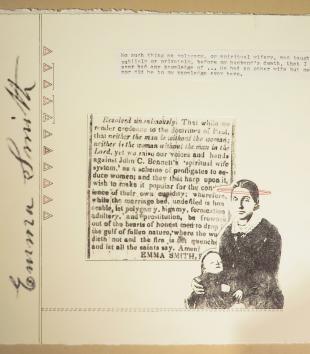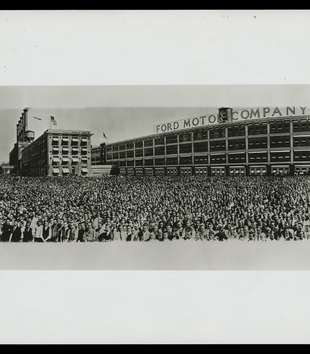There is a long history to this special issue of MAVCOR Journal on Material Islam. In 2013 a session called “The Matter of Islam” was held at the annual meeting of the American Academy of Religion. Following this, conversations with several scholars interested in questions of material religion and Islam coalesced and in 2014 we started a five-year seminar at annual conferences of the AAR focusing on Material Islam. Intentionally interdisciplinary, we brought art historians, anthropologists, and historians together with religious studies scholars, while also seeking out conversations between Islamicists and those working in other religious contexts. Several of the pieces included here came out of these meetings: Ali Karjoo-Ravary’s essay on a fourteenth-century chronicle of the ruler Burhan al-Dīn, Nathan Hofer’s study of Sufi self-isolation practices (khalwa) in medieval Egypt, Anna Bigelow’s exploration of embodiment and materiality in contemporary India, Karen Ruffle’s look at the standards carried in Shi'i commemorations of the martyrdom of Husayn, and Jonathan Brockopp’s piece on the materiality of a tenth-century Tunisian manuscript. The work of a few other seminar participants were included in a volume edited by Anna Bigelow, Islam through Objects (Bloomsbury 2021), including D. Fairchild Ruggles, Christiane Gruber, and Richard McGregor.1 Yet others have appeared elsewhere in print, including work by Asma Hilali, Charles Hirschkind, Irfana Hashmi, and Kambiz GhaneaBassiri.2 Over five years, our conversations focused on devotional objects, the Islamic sensorium, the book as a material object, the Muslim body, and the various roles of the mosque as a social, political, and spiritual space. Taken together, these varied essays demonstrate an incredibly wide-ranging, rich, and exciting arena of study.
At the outset of these collaborations, few works existed to establish material Islam as a dynamic subfield. Most publications on material religion focused on Christianity (McDannell, Morgan) or were more disciplinarily singular in orientation (Blair & Bloom).3 Scholarship that did address larger questions of Islamic approaches to materiality still needed to do the important work of unsettling tired tropes of Islamic iconoclasm or iconophobia (Elias, Gruber).4 Writing these prefatory comments in 2022, it is encouraging to see how many excellent studies have emerged in this diverse and exciting field. Leor Halevi’s Modern Things on Trial: Islam’s Global and Material Reformation in the age of Rida, 1865-1935 (Columbia, 2019), Michael Muhammad Knight’s Muhammad’s Body: Baraka Networks and the Prophetic Assemblage (UNC 2020), and Richard McGregor’s Islam and the Devotional Object: Seeing Religion in Egypt and Syria (Cambridge, 2020) are all excellent examples of the theoretical and methodological depth now becoming available.5 Attention to historical context, engagement with theoretical models from within Muslim scholarly traditions, and sustained attention to things that are often marginalized or merely mentioned combine to make the study of material Islam among the most compelling arenas of study today.
When the opportunity to publish some of the papers from the Material Islam Seminar in MAVCOR Journal was presented to us, we leaped at it. In this rigorously peer-reviewed and beautifully curated online journal, we found a partner similarly interested in innovating to push the boundaries of the study of religion and to break down the walls that continue to silo the study of non-Christian religions in the academy. The born-digital format of the journal has allowed contributors to include as many images as their argument or subject matter requires. In Ayodeji Ogunnaike’s article on “The Transcontinental Genealogy of the Afro-Brazilian Mosque,” the images in and of themselves make a significant part of the author’s argument. In the case of Anna Bigelow’s essay, we were able to include videos of the ceremonies discussed by the author. While in Nathan Hofer’s study, images take a backseat to the written record of the khalwa as a profoundly material social phenomenon.
Rather than settling on a single style of transliteration for languages written in the Arabic script, we were able to work with the staff of MAVCOR to innovate a means by which key words, such as names and important concepts, can appear in the Latin script as they are pronounced in the local language in which the authors conducted their research while their original script becomes visible to readers when they hover their cursors over the key name or term. This allows readers to see both how a word is written and how it is pronounced in a lived context. This technical solution to a longstanding problem of transliteration and the use of Arabic script across multiple languages in Islamic Studies. It has the added benefit of allowing key terms and names to become discoverable in search engines when sought in their original script.
While the dynamism of this field and possibilities of publishing in a born-digital medium are invigorating, significant challenges remain. We encountered some of these challenges already during the Material Islam Seminar. After the enthusiastic reception we received during “The Matter of Islam” panel, which was attended by over 70 people, we expected a small group of scholars to follow the seminar annually. To allow this group to engage more deeply with the papers of the seminar, we distributed them to members of the AAR ahead of the conference. But the core group we anticipated never formed. Each seminar was well attended, but different topics attracted different scholars. Our hope that the value of a discussion across varying forms of materialization and embodiment of Islamic beliefs and practices would find a sustained audience from year to year did not transpire. For example, our session on the book as a material object attracted several qur’anic studies scholars because of the papers on the Muṣḥaf (qur’anic codex). The conversations between art historians and textual scholars during the seminar were mutually informative, but they were not grounded enough in any unifying theoretical or methodological framework for them to take root and continue beyond that specific seminar. Moreover, there seemed to be a sense of competition about what really matters in Islamic Studies. This sense of competition was also palpable during the seminar on devotional objects, where we discussed whether theological and legal discourses on images and bodies should have a place in the material study of Islam. This debate inspired GhaneaBassiri’s article on wuḍu’ socks in this journal. During our seminar on the sensorium, when someone asked what the value is of studying materiality as a discreet category if everything in religions, if not in life, is embodied, their question was not taken as a productive query. In this issue, Hofer questions whether “material religion” is surreptitiously reviving religion as a stable, delimiting category. This is a genuine question. It is our hope that as the material study of Islam strives to find a place in the academy, it does not foreclose critique.
Even as the study of material religion claims to break with Protestant-centered understandings that religions are ultimately about belief, the field remains heavily Christocentric. The MAVCOR site itself is predominantly populated by articles and conversations about images familiar to Christians and scholars of Christianity in Europe and the Americas. In fact, only a handful of essays or interviews concerning Islam have appeared in the journal since its inception in 2014. (Xavier, Moallem, Makar) We also found the peer review process challenging. The careful philological training associated with traditional Islamic Studies and advances made in recent decades in the study of material culture were not natural conversation partners. Peer reviewers sometimes failed to see the contribution of some of these works. At other times they made demands for the study of religious spaces, buildings, and objects that are simply not possible through material of Islamic provenance. Conversely, some Islamic Studies scholars trained philologically did not immediately see the payoff in careful analysis of objects and images, which they took to speak for themselves.
By identifying the complexities of the Material Islam Seminar and the production of this special issue of MAVCOR Journal, we do not mean to cast a shadow on the field. On the contrary, we see these as welcome intellectual challenges rather than obstacles. They point to the dynamism of the field rather than its limitations. As Christiane Gruber points out in the interview we conducted with her for this issue, the material study of Islam is branching out in multiple directions that are “productively co-constitutive.” Focusing on the materiality of religion has meant that cultural studies scholars may need to collaborate with lab scientists to better understand the materiality of the objects they study or archaeologists might collaborate with media studies scholars to better understand the circulation of the object they study. The lack of cohering methodologies and theoretical framings is a product of these new collaborations, and could provide exciting opportunities, if allowed to take its course rather than be stifled by concerns about disciplinary boundaries.
As editors of this special issue, we addressed the above-mentioned challenges by drawing on what we learned from the multidisciplinary and inter-religious discussions in the Material Islam Seminar, to translate what is of value in Islamic Studies to scholars of materiality and vice versa. We were fortunate to work with patient authors. The journal, and our editor Emily Floyd in particular, were trusting, yet meticulous, partners who understood the challenges of inter-religious and interdisciplinary studies and allowed us the time and space we needed to get this conversation moving in a direction that is both exciting and fructifying. We hope that the success of our collaboration with MAVCOR Journal will inspire other specialists of non-Christian religions to consider the journal as a platform for their work to reach a broader audience that is both disciplined and open minded.
- 1Anna Bigelow, ed. Islam Through Objects (Bloomsbury Academic, 2021).
- 2Asma Hilali, The Sanaa Palimpsest: The Transmission of the Qur’an in the First Centuries AH (Oxford: Oxford University Press, 2017); Charles Hirschkind, The Feeling of History: Islam, Romanticism, and Andalusia, (Chicago: Chicago University Press, 2020); Irfana Hashmi, “The Development of a Locker System at al-Azhar,” Islamic Law and Society 25, no. 1-2 (2018): 11-36; Kambiz GhaneaBassiri, “Structuring Sovereignty: Islam and Modernity in the Mosque of Muhammad ‘Ali Pasha,” Material Religion 16, no. 3 (May 26, 2020): 317–44.
- 3Colleen McDannell, Material Christianity: Religion and Popular Culture in America (New Haven: Yale University Press, 1995); David Morgan, The Embodied Eye: Religious Visual Culture and the Social Life of Feeling (Berkeley: University of California Press, 2012); Jonathan Bloom and Sheila Blair, eds., Islamic Art: Past, Present, Future (New Haven: Yale University Press, 2019).
- 4Jamal J. Elias, Aisha’s Cushion: Religious Art, Perception, and Practice in Islam (Cambridge: Harvard University Press, 2012); Christiane J. Gruber, The Praiseworthy One: The Prophet Muhammad in Islamic Texts and Images (Bloomington: Indiana University Press, 2018).
- 5Leor Halevi, Modern Things on Trial: Islam’s Global and Material Reformation in the Age of Rida, 1865-1935 (New York: Columbia University Press, 2021); Michael Muhammad Knight, Muhammad’s Body: Baraka Networks and the Prophetic Assemblage (Chapel Hill: The University of North Carolina Press, 2020); Richard J. A. McGregor, Islam and the Devotional Object: Seeing Religion in Egypt and Syria (New York: Cambridge University Press, 2020).
Notes
Keywords
Imprint
10.22332/mav.ess.2022.6
1. Anna Bigelow and Kambiz GhaneaBassiri, "Introduction to the Special Issue: Material Islam," Essay, MAVCOR Journal 6, no. 2 (2022), doi: 10.22332/mav.ess.2022.6.
Bigelow, Anna and Kambiz GhaneaBassiri. "Introduction to the Special Issue: Material Islam." Essay. MAVCOR Journal 6, no. 2 (2022), doi: 10.22332/mav.ess.2022.6.

